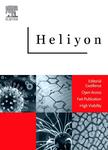版权所有:内蒙古大学图书馆 技术提供:维普资讯• 智图
内蒙古自治区呼和浩特市赛罕区大学西街235号 邮编: 010021

作者机构:BRITElab Harry Perkins Institute of Medical Research QEII Medical Centre Nedlands and Centre for Medical Research The University of Western Australia Perth Australia Department of Electrical Electronic and Computer Engineering School of Engineering The University of Western Australia Perth Australia Division of Surgery Medical School The University of Western Australia Perth WA Australia OncoRes Medical Perth WA Australia Breast Centre Fiona Stanley Hospital Murdoch WA Australia PathWest Fiona Stanley Hospital 11 Robin Warren Drive Murdoch 6150 WA Australia Division of Pathology and Laboratory Medicine Medical School The University of Western Australia Perth 6009 WA Australia Clinipath Pathology Suite 1 302 Selby Street North Osborne Park 6017 WA Australia Department of Surgery Medical School The University of Melbourne Melbourne VIC Australia Institute of Physics Faculty of Physics Astronomy and Informatics Nicolaus Copernicus University in Toruń Grudziadzka 5 Torun 87-100 Poland Australian Research Council Centre for Personalised Therapeutics Technologies Melbourne Australia
出 版 物:《Heliyon》 (Heliyon)
年 卷 期:2025年第11卷第1期
页 面:e41265页
基 金:Australian Research Council, ARC OncoRes Medical Chief Medical Officer Department of Health, Government of Western Australia, (WO/2016/ 119011, PCT/AU2016/212695) Department of Health, Government of Western Australia
摘 要:Breast-conserving surgery accompanied by adjuvant radiotherapy is the standard of care for patients with early-stage breast cancer. However, re-excision is reported in 20–30 % of cases, largely because of close or involved tumor margins in the specimen. Several intraoperative tumor margin assessment techniques have been proposed to overcome this issue, however, none have been widely adopted. Furthermore, tumor margin assessment of the excised specimen provides only an indirect indication of residual cancer in the patient following excision of the primary tumor. Handheld optical coherence tomography (OCT) probes and their functional extensions have the potential to detect residual cancer in vivo in the surgical cavity. Until now, validation of in vivo OCT has been achieved through correlation with ex vivo histology performed on the specimen removed during surgery that is adjacent to the tissue scanned in vivo. However, this indirect approach cannot accurately validate in vivo imaging performance. To address this, we present a method for robust co-registration of in vivo OCT scans with histology performed, not on the main specimen, but on cavity shavings corresponding directly to the tissue scanned in vivo. In this approach, we use ex vivo OCT scans as an intermediary, surgical sutures as fiducial markers, and extend the in vivo field-of-view to 15 × 15 mm2 by acquiring partially overlapping scans. We achieved successful co-registration of 78 % of 139 in vivo OCT scans from 16 patients. We present a detailed analysis of three cases, including a case where a functional extension of OCT, quantitative micro-elastography, was performed. © 2024